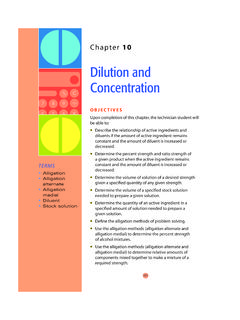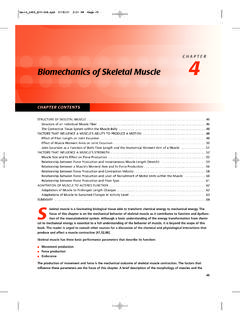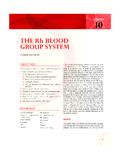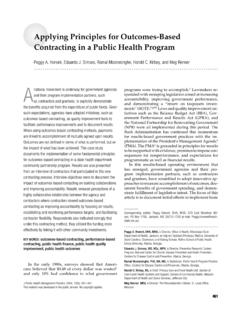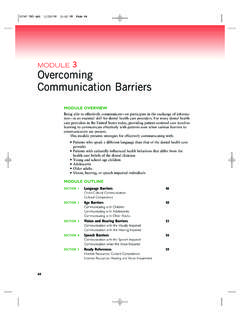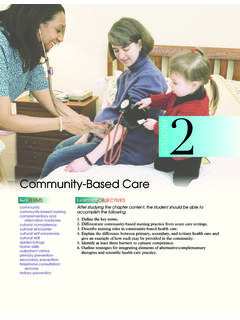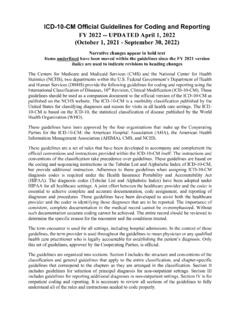Transcription of CHAPTER Preventing Pressure Ulcers and Assisting With ...
1 LWBK098-3855G-C19[431-445].qxd 01-07-2008 11:27 PM Page 431 Techbooks[PPG-Quark]. C H A P T E R. Preventing Pressure Ulcers and Assisting With Wound Care 19. A nursing assistant makes an occupied bed. Providing clean, wrinkle-free linens is just one way that nursing assistants help to prevent their patients or residents from developing Pressure Ulcers . M. any of your patients or residents will be at risk for devel- oping Pressure Ulcers . Preventing Pressure Ulcers is a major concern of the nursing team because Pressure Ulcers are painful, hard to treat, and potentially fatal. In this CHAPTER , you will learn about your role in Preventing Pressure Ulcers . Pressure Ulcers are just one type of wound you may see when you are caring for patients and residents. In this CHAPTER , you will also learn about how the health care team cares for people with wounds and your role in Assisting the nurse with wound care. 431. LWBK098-3855G-C19[431-445].
2 Qxd 01-07-2008 11:27 PM Page 432 Techbooks[PPG-Quark]. 432 UNIT 4 Basic Patient and Resident Care Preventing Pressure Ulcers . What will you learn? When you are finished with this section, you will be able to: 1. Explain how Pressure Ulcers form. 2. Discuss what conditions may increase a person's risk of devel- oping a Pressure ulcer . 3. Describe why Preventing Pressure Ulcers is so important. 4. Describe changes in the skin that could be an early sign of a Pressure ulcer . 5. Describe how nursing assistants help to prevent residents and patients from developing Pressure Ulcers . 6. Describe special equipment that may be used to help prevent Pressure Ulcers . 7. Define the words Pressure ulcer and Pressure points. How Pressure Ulcers form Many patients and residents are not able to change position easily due to weakness, disability, or illness. This inability to change position without help places the person Pressure ulcer a difficult- at high risk for developing a Pressure ulcer .
3 Pressure Ulcers form when Pressure to-heal (and possibly even fatal) points press against a mattress, chair, or other surface (Fig. 19-1). The Pressure sore that forms when part of the body presses against a surface squeezes the tissues in between the bone and the surface the person is lying or sitting (such as a mattress or chair) for on. As a result, blood flow to the tissues decreases. The tissues do not receive enough a long period of time; also nutrients and oxygen, and they die. The dead tissue peels off or breaks open, creat- known as Pressure sores and decubitus Ulcers ing an open sore or ulcer . Pressure Ulcers develop in four stages (Box 19-1). The longer a person remains in one position, the more likely that person is to develop a Pressure ulcer . Many people with limited mobility also have other risk factors for developing a Pressure ulcer , such as: Old age. The skin of an older person is fragile and thin, with less blood flow.
4 Poor nutrition and lack of fluids. For skin to remain healthy, good nutrition and adequate fluid intake are essential. Moisture. Prolonged contact with water, urine, feces, or sweat causes the epi- dermis to soften and break down (leading to skin breakdown ). Cardiovascular or respiratory problems. People with cardiovascular or respira- Pressure points bony areas where Pressure Ulcers are most tory problems are at high risk for developing Pressure Ulcers because their med- likely to form; include the heels, ical condition prevents their tissues from receiving the full amount of oxygen ankles, knees, hips, toes, elbows, shoulder blades, ears, and nutrients. the back of the head, and along Friction and shearing injuries. Friction (rubbing) and shearing (pulling) forces the spine can injure the skin and lead to skin breakdown. Friction and shearing forces are described in more detail in CHAPTER 14. Since the Omnibus Budget Reconciliation Act (OBRA), one of the crite- ria used to evaluate the quality of care given by long-term care facilities that LWBK098-3855G-C19[431-445].
5 Qxd 01-07-2008 11:27 PM Page 433 Techbooks[PPG-Quark]. CHAPTER 19 Preventing Pressure Ulcers and Assisting With Wound Care 433. Back Spine Lower spine Tailbone Heel Shoulder of head (vertebrae) (sacral area) (coccyx). Cheek Jaw Elbow Breastbone Male Knee Leg Toes and ear (sternum) genitalia Shoulder Ribs Hip (iliac Hip (greater Knee Ankle Ankle crest) trochanter of femur) (outside) (inside). Shoulder Lower spine (sacral area). Hip (ischial tuberosity). FIGURE 19-1.. Pressure points are areas where Pressure Ulcers are likely to form. receive government funding is the health care team's ability to prevent residents from getting Pressure Ulcers . The nurse is responsible for assessing each resident's risk for developing Pressure Ulcers when the resident is admitted to the long-term care facility. The nurse also documents any existing Pressure Ulcers . OBRA expects the health care team to maintain or improve the person's condition. This means that the health care team works to heal existing Pressure Ulcers and takes measures to prevent new Pressure Ulcers from forming.
6 Nursing assistants help the health care team to achieve these goals by carefully following the person's care plan. LWBK098-3855G-C19[431-445].qxd 01-07-2008 11:27 PM Page 434 Techbooks[PPG-Quark]. 434 UNIT 4 Basic Patient and Resident Care Box 19-1 Stages of Pressure ulcer Development Stage 1 Pressure ulcer First appears as a reddened area of skin that does not return to the normal color after the Pressure is removed The reddened area may later become very pale or white, and shiny Stage 2 Pressure ulcer Looks like a blister, an abrasion, or a shallow crater The epidermis peels away or cracks open, creat- ing a portal of entry for pathogens The dermis may be partially worn away as well Stage 3 Pressure ulcer The epidermis and dermis are gone, and the subcutaneous fat may be visible in the crater There may be drainage from the wound Stage 4 Pressure ulcer The crater of damaged tissue extends all the way through the tissues to the muscle or bone LWBK098-3855G-C19[431-445].
7 Qxd 01-07-2008 11:27 PM Page 435 Techbooks[PPG-Quark]. CHAPTER 19 Preventing Pressure Ulcers and Assisting With Wound Care 435. Assisting with mobility and repositioning Using your observational skills Anticipating toileting needs Minimizing friction and shearing forces Offering fluids Providing good skin and perineal care Providing clean, dry, wrinkle-free linens FIGURE 19-2.. There are many things you can do to help prevent a person from getting a Pressure ulcer . (Photograph Garry Watson/Photo Researchers, Inc.). LWBK098-3855G-C19[431-445].qxd 01-07-2008 11:27 PM Page 436 Techbooks[PPG-Quark]. 436 UNIT 4 Basic Patient and Resident Care TELL THE NURSE ! The nursing assistant's role in Preventing Pressure Ulcers Pressure Ulcers A reddened area does not Pressure Ulcers are very painful and difficult to treat. Ultimately, they can cause a return to its normal color person to die. For these reasons, every effort must be made to prevent a Pressure after the Pressure is ulcer from forming.
8 As a nursing assistant, there are many things that you can do relieved to help keep a person's skin healthy (Fig. 19-2). General guidelines for Preventing A previously reddened Pressure Ulcers are given in Guidelines Box 19-1. area is hot to the touch or painful A previously reddened area is now pale, white, or shiny A Pressure ulcer has changed in size or depth Guidelines Box 19-1 Guidelines for Preventing Pressure Ulcers What you do Why you do it Reposition a person who must stay in bed or in a Regular repositioning prevents any one part of the per- wheelchair at least every 2 hours, or according to the son's body from being under Pressure for too long. person's care plan. Take the bedpan out from underneath the person as The bedpan places Pressure on the person's lower spine, soon as the person is finished using it. one of the Pressure points. Check the patient's or resident's skin for changes at Redness over a Pressure point that does not go away every opportunity, including when you are Assisting after 5 minutes or an area over a Pressure point that the person with repositioning, bathing, and dressing was previously red but now is pale, white, or shiny could and when you are changing wet or soiled linens or be a sign of a stage 1 Pressure ulcer .
9 Early recognition giving a back massage. Report red, pale, white, or and treatment of a Pressure ulcer is important so that shiny areas over Pressure points right away. measures can be taken to prevent the Pressure ulcer from getting worse. Provide good skin care. When bathing a person, clean Keeping the skin clean and dry is essential to Preventing the skin gently and thoroughly and rinse off the soap skin breakdown and Pressure ulcer development. well. Make sure the skin is dried well and use lotion to keep the skin healthy and soft. Thoroughly clean and dry areas where skin touches skin , such as under the breasts, and apply a light dusting of powder to keep the skin dry. LWBK098-3855G-C19[431-445].qxd 01-07-2008 11:27 PM Page 437 Techbooks[PPG-Quark]. CHAPTER 19 Preventing Pressure Ulcers and Assisting With Wound Care 437. Guidelines Box 19-1 (Continued). What you do Why you do it Provide good perineal care, especially if the person is Urine and feces are irritating to the skin and can lead incontinent of urine or feces.
10 To skin breakdown. Prompt, thorough perineal care keeps the skin clean and dry, which is essential to Preventing skin breakdown and Pressure ulcer development. Assist the person to the bathroom (or provide a bed- Contact with wet and soiled clothing or linens can cause pan or urinal) frequently. Check on incontinent people skin breakdown, leading to Pressure Ulcers . Anticipating every hour so. toileting needs helps to prevent patients and residents from soiling themselves. Checking on incontinent patients and residents frequently allows you to detect and change wet and soiled clothing or linens promptly. Ask patients or residents who can walk to take a walk Exercise and movement promote blood flow to the tis- with you every 2 hours. Remind paralyzed patients or sues and prevent the person from staying in any one residents to change positions in the wheelchair or position for too long a time. move to the bed for a while. Make sure the bed linens are clean, dry, and wrinkle- Soiled, wet, or excessively wrinkled linens can lead to free at all times.

